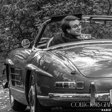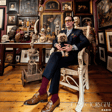
Sylvain Berneron - The Man Behind The Most Anticipated Watch Of The Year
Sylvain Berneron is my guest today and I am not sure there is a watch or a brand that has received this much attention in a long time, and it’s well deserved. A designer at heart, Sylvian worked for brands like BMW & Porsche before starting his own firm, and eventually becoming the Chief Product Officer at Breitling. But as a creative, Sylvain was taught by his mother, an artist herself, to turn a constraint or restriction into an opportunity, and that’s exactly what he did with the Mirage watch. He has designed every single component of the watch and spared no expense, all the way down to the solid gold spring bars. Every supplier tried to talk him out of this endeavor, but he persevered into what is one of the most sought after and recognized independent watch brands existing today. His creativity and thoughtfulness has landed the brand with allocated orders all the way through 2028. We chat about the perfect timing of his avant garde design with the current market demands, what it’s like to be on the other side of the collecting market, and the future plans of Berneron to which we got some sneak peaks. To be honest, there's not a person in this hobby and trade that deserves it more. So without further adieu, this is Sylvain Berneron, for Collectors Gene Radio.
Berneron's Website - https://www.berneron.ch/
Berneron's Instagram - https://www.instagram.com/berneron/?hl=en
On The Dash Interview - http://www.onthedash.com/berneron-mirage-interview/



















